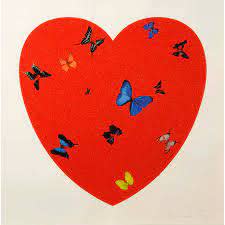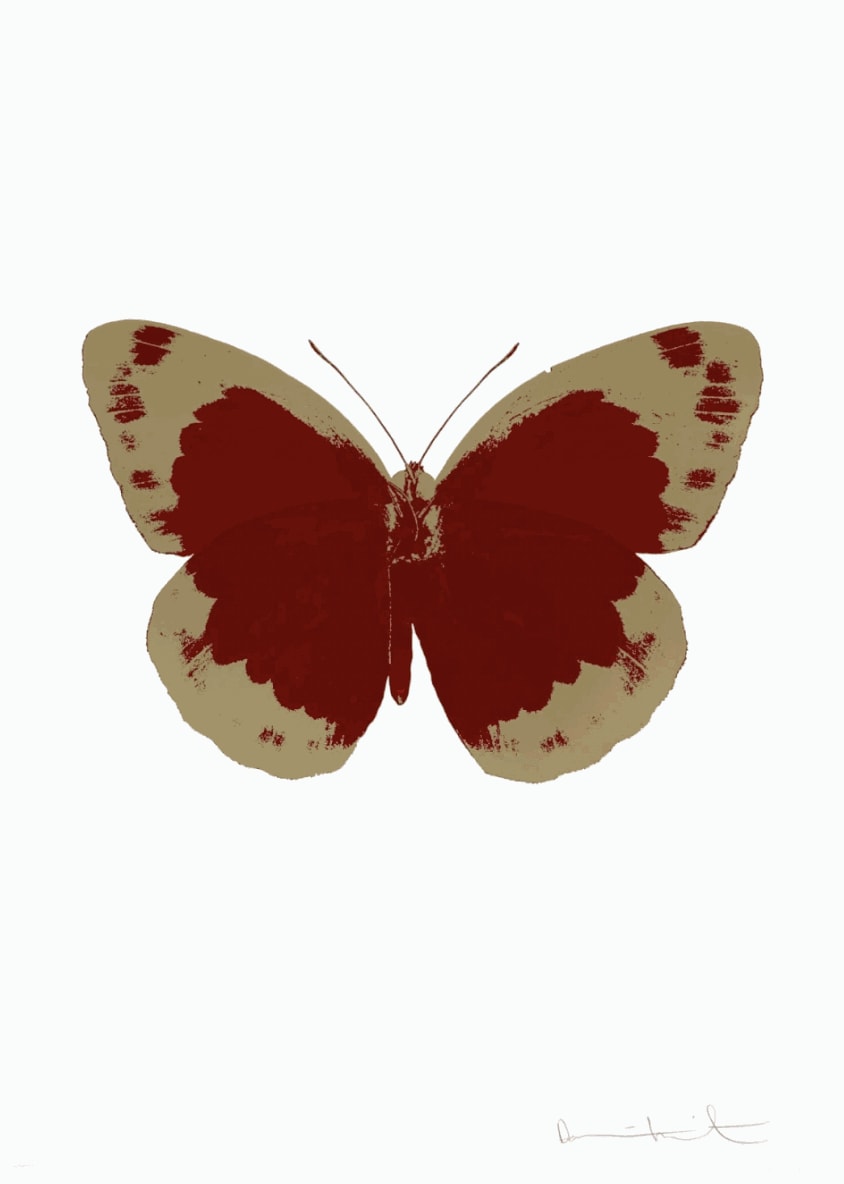"I think rather than be personal you have to find universal triggers: everyone's frightened of glass, everyone's frightened of sharks, everyone loves butterflies."
Butterflies have been a constant motif in Damien Hirst's work. Referring to them as a "universal trigger," they're used in his pieces to symbolize love, beauty, and the fragility of life. Hirst describes himself as possessing a "Victorian obsession with nature," a claim that's fitting considering butterflies have been sought and collected as a recreational activity for centuries. As a lifelong collector, Hirst's interest in tactile art shows the artist's pursuit of conservation as he explores how humans relate to the spaces they occupy. Over the years, Hirst has released a number of collections featuring butterflies, all touching on universal themes like religion, relationships, and human history.
'The Souls' collection deals with the fragility of life and the promise of death. By projecting this through butterflies, Hirst reflects human's unwavering obsession with beauty and how even a force as powerful as death still pales in comparison. Hirst explains, "I love butterflies because when they are dead they look alive. The foilblock gives them a feel similar to the actual butterflies in the way that they reflect the light." He shows that butterflies are valued more for their aesthetic of being alive than their actual being. He continues, "After 'The Dead' I had to do the butterflies because you can't have one without the other." To Hirst, butterflies encapsulate the dynamic between death and the immortality of beauty.
Hirst's 'Love' collection shows the butterfly as an overt symbol of love and unity. The insects are displayed in full form, enclosed in the shape of a heart yet existing comfortable together. Hirst takes lines from The Beatle's ballad, "All You Need Is Love," to name the pieces, cementing the butterfly as a universal signifier for love and wholesomeness.
In 'The Aspects', Hirst arranges images of butterflies into intricate kaleidoscopic patterns. The perfect symmetry of the wings resembles both the stained glass windows in Gothic architecture and the circular patterns of mandalas. Hirst signifies the butterfly as a spiritual icon, which was first used by the Greeks to depict the soul and later in Christian imagery to symbolize resurrection. The titles of the pieces in 'The Aspects' include common virtues found in a range of religions, such as Goodness, pictured above.
July 5, 2023





